您们的需要 我们的专注
Your Needs Our Focus
财经快讯
-
 查看详情
查看详情加密巨頭Kraken秘密提交IPO申請,搶占2026年中選前最後窗口期
本周三,全球最大的加密貨幣交易所之一Kraken(母公司Payward Inc.)已向美國證券交易委員會(SEC)秘密提交了IPO申請。在特朗普政府對數字資產展現出的強力政策支持下,Kraken正試圖抓住2026年中期選舉前的最後窗口期,計劃最早於明年第一季度掛牌上市。 就在遞表前夕,Kraken剛剛完成了新一輪融資。該公司周二在一份聲明中披露,其最新一輪融資總額達8億美元,投後估值升至200億美元。這一數字較兩個月前上一輪融資時的150億美元估值飆升了33%。 本輪融資吸引了包括Citadel Securities和Jane Street在內的華爾街頂級做市商與交易機構參與,其中Citadel Securities註資約2億美元。據媒體此前消息,Kraken已聘請摩根士丹利和高盛集團作為其IPO的主承銷商。 Third Bridge分析師Jacob Zuller指出:“Kraken的秘密IPO申請釋放了一個明確信號:加密資產將長期存在,且交易所賽道並非‘贏家通吃’的市場。近期融資和IPO將為Kraken的產品創新及海外擴張提供關鍵資金支持。” 從宏觀背景來看,Kraken的上市沖刺與當前的政治周期密切相關。自特朗普重返白宮並簽署《天才法案》(Genius Act)以來,美國監管環境對加密行業明顯轉暖。總統此前承諾將美國打造為“世界加密貨幣之都”。這一政策紅利刺激了包括Gemini、Bullish在內的多家頭部機構在今年登陸美股市場。 然而,隨著2026年中期選舉臨近,市場對於監管風向可能轉變的擔憂正在上升。為了對沖未來的不確定性,包括Grayscale和托管初創公司BitGo在內的多家加密領域企業均在加速推進IPO進程。 業務層面,成立於2011年的Kraken正試圖擺脫單一的“加密貨幣交易所”標簽,轉而向綜合性金融服務平臺轉型。公司近期推出了免傭金股票交易服務,並開始在歐盟地區向客戶提供代幣化股票交易。 與此同時,Kraken 也一直在積極通過收購進行擴張。今年5月斥資15億美元收購了零售期貨交易平臺NinjaTrader,上月又以1億美元從IG Group手中收購了期貨交易所Small Exchange。 風險提示及免責條款 市場有風險,投資需謹慎。本文不構成個人投資建議,也未考慮到個別用戶特殊的投資目標、財務狀況或需要。用戶應考慮本文中的任何意見、觀點或結論是否符合其特定狀況。據此投資,責任自負。
2025-11-20 -
 查看详情
查看详情AI狂潮下的債務杠桿——下一場金融風暴導火索?
人工智能基礎設施建設的巨大資本需求,正通過一個日益龐大的債務市場與全球金融系統深度綁定。 19日,StockMarket.News在X上發帖認為, 推動這一趨勢的核心,是科技巨頭們急劇膨脹的資本支出。以亞馬遜為例,其資本支出同比激增75%,規模已接近公司運營現金流的水平。面對如此巨大的資金缺口,傳統的股權融資已難以為繼,企業不得不轉向債券市場和私募信貸尋求支持。 市場的反應極為熱烈。亞馬遜近期一筆150億美元的債券發行,吸引了高達800億美元的認購需求,顯示出機構投資者在當前高估值、低利率和激烈競爭環境下對收益率的極度“渴望”。養老基金、共同基金和保險公司正成為這股融資潮的支柱,它們將大量資金配置於AI相關的債務工具,從而將數百萬普通投資者的儲蓄與科技行業的未來緊密相連。 這一模式正引發市場關於風險傳導的擔憂。分析認為,這種將高杠桿、集中化的行業押註廣泛分散至整個金融系統的做法,與2008年金融危機前的抵押貸款市場存在相似之處。一旦作為基礎資產的“AI基礎設施”投資邏輯出現裂痕,其後果將遠不止沖擊矽谷。 資本渴求催生債務依賴 AI競賽的本質是一場資本消耗戰。為了構建算力基礎設施,科技公司正投入前所未有的巨額資金。據華爾街見聞此前文章,美銀表示,美國五大雲計算巨頭(亞馬遜、谷歌、Meta、微軟、甲骨文)今年迄今的總發行量達到驚人的1210億美元,是過去五年平均280億美元的四倍有余。這場債券供應洪流對市場造成顯著沖擊,雲巨頭債券利差大幅擴大,其中甲骨文利差擴大48個基點,Meta和谷歌分別擴大15和10個基點,明顯跑輸整體投資級債券指數。 同時,美銀認為,2026年預計供應量維持在1000億美元左右,不會進一步加速。 據市場分析預測,僅在2025年至2028年間,AI基礎設施項目預計就需要約8000億美元的私募信貸資金,這相當於同期該領域全部基礎設施投資預期的三分之一。 在這樣的背景下,負債成為必然選擇。當企業的資本支出規模追平甚至超過自身造血能力(即運營現金流)時,外部債務融資便從一個選項變為了必需品。亞馬遜並非孤例,Meta和Oracle等科技巨頭也在構建類似的融資安排,它們常常通過表外工具和資產證券化產品,將債務打包、分層後出售給不同風險偏好的投資者。 強勁的融資需求恰好迎合了機構投資者的“收益率困境”。在全球股市估值偏高、傳統固收產品回報有限的背景下,與AI這一高成長性行業掛鉤的債務產品,提供了頗具吸引力的替代方案。 亞馬遜債券的超額認購便是縮影。巨大的需求推動這類交易被迅速推向市場,其定價往往在一夜之間被進一步壓低,這甚至讓債券管理人在相關基礎設施建成之前,就能獲得即時的賬面利潤。這種對收益的追逐,驅使養老基金和保險公司等長期資本的管理者,將AI相關債務作為其投資組合的重要組成部分。 從科技巨頭到退休金:風險如何傳導? 這種融資結構的核心風險在於其廣泛的傳導性。與僅限於少數專業投資者的股權融資不同,這些債務通過養老金、共同基金和保險公司的投資組合,被廣泛地分配到了金融系統的各個角落。 這意味著,一旦AI領域出現增長不及預期、技術路線被證偽或項目違約等負面事件,導致相關債務資產被迅速重新定價,其影響將迅速擴散。被迫的拋售可能引發連鎖反應,導致跨行業的資產價格下跌,形成典型的“傳染”效應。這種機制下,最初源於某一科技公司的風險,最終可能演變為沖擊整個金融體系的系統性危機。 市場觀察人士警告,當前的情景與2008年金融危機前的抵押貸款市場有著令人不安的相似性。當時,金融機構普遍追逐由次級抵押貸款打包而成的金融產品所帶來的高收益,並默認其基礎資產的穩定性。然而,高度的杠桿和對房地產市場的單一集中押註,最終釀成了災難。 如今,市場似乎再次陷入了類似的邏輯:所有人都在追逐收益,並假設AI的增長前景穩定可靠。但其底層結構同樣因高杠桿和對單一賽道的集中投資而天然具有風險。假如“AI基礎設施”的投資論述出現裂痕,其沖擊波將不僅限於科技公司或銀行,更將直接觸及每一個與機構投資組合相關的散戶投資者和退休人員。 風險提示及免責條款 市場有風險,投資需謹慎。本文不構成個人投資建議,也未考慮到個別用戶特殊的投資目標、財務狀況或需要。用戶應考慮本文中的任何意見、觀點或結論是否符合其特定狀況。據此投資,責任自負。
2025-11-19 -
 查看详情
查看详情浙江首單民營航空IPO項目來了:長龍航空啟動輔導
11月17日,浙江長龍航空股份有限公司(下稱“長龍航空”)啟動A股IPO輔導。 長龍航空成立於2011年,控股股東是浙江長龍集團有限公司,實控人系劉啟宏。 這是多年來難得一見的民營航空公司A股上市項目。 目前A股的4家民營航空公司春秋航空(601021.SH)、吉祥航空(603885.SH)、華夏航空(002928.SZ)、海航控股(600221.SH),分別在2015年、2015年、2018年和1999年便上市。 從區域屬性來看,長龍航空是當前唯一一家浙江本土民營航空公司,其獲得了當地政府的大力支持。 2021年,浙江省產業基金便以直接投資形式定向支持建設長龍航空創新智能維修保障主基地產業項目。 目前長龍航空已累計開通國內外客貨運航線近600條,覆蓋全國並通達日韓、港澳、東南亞、中亞等“一帶一路”沿線國家和地區的170余個城市。 不過當前航空公司的日子並不算好過,A股的4家民營航空公司業績增速乏力,2025年前三季度春秋航空、吉祥航空、華夏航空、海航控股的收入分別同比增長4.98%、-0.06%、11.25%、3.3%。 這是行業整體承壓的結果。2025年第三季度國內航班量、旅客量分別僅同比增長了2%、2.84%。 不過油價下跌在一定程度上增厚不少航空公司的利潤空間。2025年前三季度航空煤油均價為85.85美元/桶,較去年同期下降超1成。 中國國航曾在2024年做過測算,在其他變量保持不變的情況下,若平均航油價格下降5%,將帶動其航油成本下降26.86億元。 展望第四季度,中泰證券認為目前油價、匯率迎來雙重利好,四季度呈現“淡季不淡”趨勢,預計2025年四季度航空行業有望大幅減虧,2026年行業盈利彈性有望釋放。 這或許都給長龍航空的業績帶來更多增長空間。 作為長龍航空的輔導機構,華泰聯合計劃明年4月完成輔導,屆時其有望邁向申報的第一步。 風險提示及免責條款 市場有風險,投資需謹慎。本文不構成個人投資建議,也未考慮到個別用戶特殊的投資目標、財務狀況或需要。用戶應考慮本文中的任何意見、觀點或結論是否符合其特定狀況。據此投資,責任自負。
2025-11-18 -
 查看详情
查看详情歐央行高官警告:穩定幣系統性風險不容忽視,一旦遭遇擠兌或迫使利率政策轉向
隨著與美元掛鉤的穩定幣市場規模急劇膨脹,歐洲央行(ECB)的一位高級決策者警告稱,一旦該市場發生擠兌,其產生的沖擊波可能迫使央行重新考慮其利率路徑。 據英國《金融時報》11月17日報道,荷蘭央行行長、歐洲央行管理委員會成員Olaf Sleijpen在一次采訪中發出了這一警告。他指出,這些與美元等法幣掛鉤的數字代幣,在某個時刻將變得“具有系統重要性”。 這一擔憂的背景是,在美國總統特朗普頒布新規為私營部門發行穩定幣鋪平道路後,穩定幣的體量今年已飆升48%,超過3000億美元。其中許多穩定幣由美國國債等資產作為支持。 Sleijpen表示,如果穩定幣“不夠穩定”,可能導致其底層資產被恐慌性拋售。他警告,這不僅會威脅金融穩定,還會波及更廣泛的經濟和通脹,從而可能迫使歐洲央行采取行動。 Sleijpen的警告反映了歐洲央行官員對穩定幣崛起的普遍憂慮。他解釋稱,底層資產的快速拋售可能首先對金融穩定造成沖擊,進而影響實體經濟和通脹。 在這種情況下,歐洲央行“可能不得不重新思考貨幣政策”,盡管他補充說,政策調整的方向(降息或加息)尚不確定,且應首先使用金融穩定工具。 當前利率立場維持不變 盡管對未來風險發出警告,但Sleijpen對當前的貨幣政策持相對樂觀態度。他認為,自6月以來,歐元區的狀況已“略有好轉”,貿易不確定性下降,經濟增長好於預期,通脹也基本符合2%的中期目標。 因此,他表示,“沒有理由”根據現有信息調整利率。對於通脹風險,他認為目前是“平衡的”,這與歐洲央行執行董事會成員Isabel Schnabel認為風險“略微偏向上行”的鷹派觀點有所不同。據LSEG的數據,投資者目前預計到明年年底再次降息25個基點的可能性僅為25%。 風險提示及免責條款 市場有風險,投資需謹慎。本文不構成個人投資建議,也未考慮到個別用戶特殊的投資目標、財務狀況或需要。用戶應考慮本文中的任何意見、觀點或結論是否符合其特定狀況。據此投資,責任自負。
2025-11-17 -
 查看详情
查看详情削弱企業可持續發展報告規則!歐洲要放松“綠色管制”了?
歐洲議會一項旨在放松企業環境、社會和治理(ESG)報告義務的投票,正被市場解讀為歐盟政策天平從綠色雄心向放松管制傾斜的強烈信號。 據英國《金融時報》報道,歐洲議會於11月13日本周四以382票贊成、249票反對的顯著優勢,通過了削弱企業可持續發展報告規則的法案。此次投票的決定性力量,來自於中右翼的歐洲人民黨(EPP)與極右翼的“歐洲愛國者”和右翼的“歐洲保守派和改革主義者”黨團的聯合。 這一舉動被視為對美國總統特朗普所倡導的放松環境法規呼聲的響應。EPP領袖Manfred Weber表示,此舉兌現了其“減少繁文縟節”的承諾。然而,對於關註可持續投資的機構和市場參與者而言,這意味著歐盟長期以來在全球綠色監管領域的引領地位可能出現動搖。 從投資者和企業運營的角度看,法案最直接的影響是大幅收緊了監管範圍。根據新規,只有員工超過5000人且年營業額高於15億歐元的大型企業,才需要履行關於勞工和環境事務的盡職調查與報告義務,大量中小型公司將被豁免。 更值得關註的是,投票廢除了要求公司準備“綠色轉型計劃”的條款,而這一直是許多企業抱怨的負擔。盡管新規保留了對違規企業的處罰措施,包括罰款或對受害者進行賠償,但整體上顯著降低了企業的合規成本和壓力。 不過,該法案的最終命運懸而未決。它必須經過與歐盟各成員國的談判才能成為正式法律。包括法國和德國在內的主要經濟體已公開呼籲廢除該法案,預示著未來的立法過程將充滿博弈,也讓依賴明確監管信號的投資者面臨更復雜的政策環境。 風險提示及免責條款 市場有風險,投資需謹慎。本文不構成個人投資建議,也未考慮到個別用戶特殊的投資目標、財務狀況或需要。用戶應考慮本文中的任何意見、觀點或結論是否符合其特定狀況。據此投資,責任自負。
2025-11-14 -
 查看详情
查看详情阿裏股價直線拉升!“通義千問”全面對標ChatGPT,進軍C端市場
阿裏巴巴集團正準備對其旗艦AI應用進行重大改版,旨在使其功能更接近OpenAI的ChatGPT。 13日,據媒體援引知情人士透露,阿裏巴巴計劃在未來幾個月內更新現有的“通義”iOS和安卓應用,並將其更名為“千問”(Qwen),以呼應公司知名的AI大模型。 隨後,改版後的應用將在未來數月逐步增加代理式AI(agentic-AI)功能,以支持在淘寶等主要平臺上的購物體驗。消息人士稱,此舉的最終目標是嘗試將千問打造成一個功能完備的AI代理,這是AI行業追求的首要目標。 為此次改版,阿裏巴巴在過去數月已投入超過100名來自公司各部門的開發者,兩層辦公樓已被劃為千問項目的專屬區域。這一行動也與公司首席執行官吳泳銘去年9月所提及的增加3800億元的AI投資計劃相呼應。消息公布後,阿裏巴巴港股股價直線拉升,漲幅擴大至3%,此前一度跌約1.5%,帶動恒生科技指數轉漲。 從B端轉向C端的戰略布局 對於許多中國科技公司而言,AI的商業化模式主要集中在企業端市場,而非付費意願相對較低的個人消費者。在此背景下,阿裏巴巴希望通過整合購物功能,利用其傳統強項電商來吸引並沈澱用戶,與ChatGPT等產品展開正面競爭。盡管改版後的千問應用目前仍將對用戶免費,但建立龐大的用戶基礎將為未來推出面向消費者的收費服務鋪平道路。 分析認為,此次改版也凸顯了阿裏巴巴在AI消費應用市場的競爭壓力。目前,在用戶普及度方面,阿裏的Qwen落後於字節跳動的豆包和騰訊的元寶。通過推出功能更先進的AI模型,阿裏巴巴正與Minimax等初創公司及字節跳動等競爭對手一道,努力在性能上超越OpenAI和DeepSeek等行業領導者。 此次整合旨在為消費者建立一個清晰、統一的品牌形象。目前,阿裏巴巴不僅運營著“通義”系列消費級應用,還在iOS和安卓平臺上線了功能相對較少的“Qwen Chat”。據知情人士稱,公司計劃將這些應用整合到“千問”品牌之下,打造一款消費者首選的一站式應用。 知情人士還表示,公司計劃最終推出千問的海外版本,將其推向全球市場。 AI成為增長新引擎 中國科技公司正向AI領域投入資金。今年9月,阿裏巴巴CEO吳泳銘就已勾勒出公司推出新模型和“全棧”AI技術的藍圖,反映了其在開發服務和支撐技術的基礎設施(如芯片)兩端的雄心。 Qwen大模型的研發始於三年前,目前已成為全球排名第一的開源大模型。最新發布的Qwen3-Max性能超過GPT5、Claude Opus 4等國際競爭者,躋身全球前三。 Qwen系列模型的全球下載量已突破6億次。Airbnb CEO布萊恩·切斯基公開表示,公司正"大量依賴Qwen",因其比OpenAI模型更快更好。英偉達CEO黃仁勛表示,Qwen已占據全球開源模型的大部分市場,並在持續擴大份額。 這並非阿裏巴巴首次嘗試將AI能力帶給消費者,公司今年早些時候已對其搜索應用誇克(Quark)進行了改版,計劃將其打造成全能型AI助手,該應用將繼續為用戶提供服務。 最新的財務數據顯示,AI正日益成為阿裏巴巴的重要增長動力。在最近一個季度,公司AI相關產品實現了三位數增長,其雲業務部門的銷售額也超出預期,成為集團增長最快的業務單元。 風險提示及免責條款 市場有風險,投資需謹慎。本文不構成個人投資建議,也未考慮到個別用戶特殊的投資目標、財務狀況或需要。用戶應考慮本文中的任何意見、觀點或結論是否符合其特定狀況。據此投資,責任自負。
2025-11-13 -
 查看详情
查看详情AI狂潮“虹吸”全球資本,AI已讓美元“見底”?
美國科技公司數萬億美元的AI基礎設施投資正在重塑全球資本流向,這一企業層面的劇變已演變為美元的關鍵支撐因素。盡管這一動態尚未充分進入外匯市場的主流敘事,但其對美元的提振作用正在悄然顯現。 美國科技巨頭大幅提升了AI相關資本開支預期。據追風交易臺消息,巴克萊在9日的研報中表示,2025年的支出預測已從一年多前的數千億美元升至約5000億美元,未來五年總投資規模將超過3萬億美元,按部分估算相當於GDP的10%以上。這些投資正通過企業債券發行等渠道從全球吸納資本。 這一趨勢已開始在宏觀數據中顯現。2025年前兩個季度,投資項目對美國GDP的貢獻升至每季度年化1個百分點,為2023年以來的最高水平。美元情緒指標目前已轉為正值區間,表明市場對美元的看法正在改善。 巴克萊認為,這些發展強化了其此前判斷——美元可能已經見底。盡管外匯市場的敘事仍聚焦於數據缺失和政府停擺風險,但AI投資熱潮帶來的增長韌性、利率預期重估以及全球資本流入,正在構成美元的"沈默支撐"。 AI投資規模超預期擴張,推動美元築底 美國科技公司的AI資本開支預期在過去幾個月大幅上調。一年多前,市場對2025年AI相關支出的預期僅為數千億美元。如今這一數字已攀升至約5000億美元,未來五年的總投資規模預計將超過3萬億美元。按部分估算,這相當於美國GDP的10%以上。 這一投資熱潮已開始對宏觀經濟產生實質性影響。2025年前兩個季度,投資對美國GDP的貢獻升至每季度年化1個百分點,這是自2023年以來首次達到這一水平。 AI投資帶來的經濟產出韌性正在重塑市場預期。巴克萊指出,盡管基數效應可能意味著明年某個時點投資對增長的拉動作用會減弱,但目前AI投資仍處於加速階段。這種增長加速與美國資產的優異表現相伴而行,為美元提供支撐。 此外,投資支出的乘數效應可能推動利率預期繼續面臨現實檢驗。市場此前預期的經濟增長大幅放緩可能難以實現,這意味著美聯儲深度降息周期的概率降低。這一部分產出韌性也推動了政策利率預期的重新定價,幫助美元止跌企穩。巴克萊的美元情緒指數目前已轉為正值區間。 企業債發行虹吸全球資本 AI投資熱潮的一個被低估的美元影響在於其對全球資本的吸納效應。通過大規模企業債券發行,美國正在從世界各地吸收資源和資本。無論是通過直接參與增發,還是通過反向揚基債券發行,這一投資熱潮創造的優勢正在將資源引向美元。這種資本流動構成了對美元的"沈默"但實質性的支撐。 巴克萊強調,宏觀領域有時會將企業層面的發展視為發生在某個平行宇宙中。盡管外匯市場的敘事仍停留在數據缺失和政府停擺風險上,但"房間裏的大象"實際上是科技公司的巨額AI投資及其引發的全球資本流動。 美元見底預期面臨的風險 這些發展強化了巴克萊在9月展望和全球展望報告中提出的觀點——美元可能已經見底。事實上,美元目前的交易水平甚至強於該機構此前超出市場共識的預期。巴克萊表示,事後看來應該保留其最初設定的歐元兌美元1.13的中期預測。 不過,這一判斷仍面臨關鍵風險。巴克萊指出,主要風險包括對美聯儲獨立性的幹預,盡管Cook司法裁決帶來的風險目前已有所下降。此外,企業債券市場惡化的可能性,特別是美國科技信貸領域部分板塊的信用利差擴大,也構成值得關註的風險因素。 盡管存在這些風險,AI投資熱潮推動的增長韌性、利率預期重估以及全球資本流入這三大因素,正在為美元提供多重支撐。這一"沈默的美元上漲"可能標誌著美元走勢的重要轉折點。 風險提示及免責條款 市場有風險,投資需謹慎。本文不構成個人投資建議,也未考慮到個別用戶特殊的投資目標、財務狀況或需要。用戶應考慮本文中的任何意見、觀點或結論是否符合其特定狀況。據此投資,責任自負。
2025-11-11 -
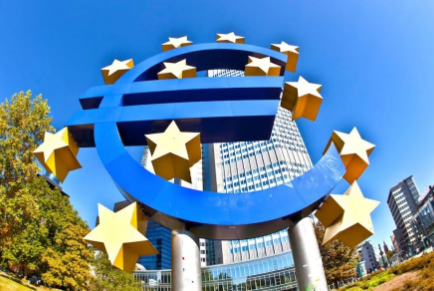 查看详情
查看详情歐央行領導層將迎“大換血”,下任行長人選競爭開啟!
歐洲央行即將啟動高層領導班子的大規模改組,這場人事變動將最終決定誰將接替現任行長拉加德(Christine Lagarde)。 11月10日,據媒體報道,到2027年底,歐央行執行委員會六個席位中的四個將出現空缺,一場關於歐元區最高貨幣政策職位的爭奪戰已在幕後展開。 報道稱,副行長金多斯(Luis de Guindos)的任期將於明年5月率先到期,歐央行即將要求布魯塞爾啟動正式接替程序。報道援引三位知情人士透露,歐元區財長們將於本周開始討論此事。 隨後,拉加德、首席經濟學家萊恩(Philip Lane)和施納貝爾(Isabel Schnabel)的任期也將在2027年相繼結束,引發歐元區各國對該地區最具權力的貨幣政策職位的激烈競爭,而圍繞歐央行行長職位的幕後角力已經開始。 分析人士指出,副行長人選的國籍和貨幣政策立場將對拉加德繼任者的選擇產生重大影響,這關乎歐元區即將擴至21個成員國之間錯綜復雜的權力平衡。 三位央行行長主要競爭者浮出水面 關於副行長人選,報道指出,芬蘭已決定推舉其央行行長雷恩(Olli Rehn)競爭副行長職位,他是一名經濟學家和前歐盟委員。 Rehn是歐央行管理委員會中較為鴿派的聲音之一,他警告通脹可能低於央行2%目標的風險。值得註意的是,這一任命競爭恰逢美聯儲主席鮑威爾(Jay Powell)的任期也將於5月到期。 另外,報道援引一位知情人士透露,克羅地亞政府也準備提名其央行行長Boris Vujčić。 圍繞歐央行行長職位的幕後角力已經開始。 據報道,知情人士透露,前荷蘭央行行長諾特(Klaas Knot)和德國央行行長納格爾(Joachim Nagel)是接替拉加德的兩位主要競爭者。 前西班牙央行行長、現任國際清算銀行總經理Pablo Hernández de Cos被一位知情人士形容為"符合所有條件"的第三位候選人,他是一位受人尊敬的前學術經濟學家。 納格爾已開始遊說柏林支持他成為下任歐央行行長。 報道指出,知情人士透露,他最近進行了一系列演講和采訪,包括在希臘、西班牙、印度和美國,主題涉及"讓歐洲適應其新的全球角色"等。德國雖然是歐元區最大成員國,但從未擔任過歐央行行長。 前德國總理默克爾的首席經濟顧問Lars-Hendrik Röller最近表示,"我認為是時候了(讓德國人領導歐央行),但這很復雜。" 西班牙與德國一樣從未擔任過歐央行行長,且是目前唯一保持顯著增長的大型歐元區經濟體。在金多斯離任後,西班牙在執行委員會中也將沒有代表。Hernández de Cos曾在西班牙商學院和馬德裏卡洛斯三世大學任教,擁有學術和機構經驗,在管理委員會中以務實聲音著稱。 但歐央行職位往往是歐元區成員國之間更廣泛政治交易的一部分。一位央行資深人士表示,"不幸的是,資質並不一定是決定性因素。" 復雜的權力平衡考量 歐央行執行委員會席位的分配是一項高度復雜的任務。摩根士丹利首席歐洲經濟學家、前歐央行高級研究員Jens Eisenschmidt表示: "在歐央行執行委員會中體現歐洲成員國的全面代表性是一項極其復雜的任務。" 值得註意的是,歐洲央行執行委員人選存在一項不成文規則,即任何國家不能同時占據兩個執行委員會席位,各國政府還尋求在鷹派和鴿派立場之間保持平衡。 2007年後加入歐元區的東歐和波羅的海國家正要求在執行委員會中獲得發言權,拉脫維亞已公開爭取席位。 性別平衡也是考慮因素之一。歷史上,歐央行執行委員會一直以男性為主導。自1998年以來,26名成員中只有19%是女性。一位接近討論的人士表示,"法國以及歐洲議會將特別強調性別問題。" 報道稱,法國央行副行長Agnès Bénassy-Quéré、希臘央行副行長Christina Papaconstantinou、經合組織首席經濟學家Laurence Boone以及倫敦商學院教授Hélène Rey,均被知情人士視為執行委員會席位的有力女性競爭者。 風險提示及免責條款 市場有風險,投資需謹慎。本文不構成個人投資建議,也未考慮到個別用戶特殊的投資目標、財務狀況或需要。用戶應考慮本文中的任何意見、觀點或結論是否符合其特定狀況。據此投資,責任自負。
2025-11-10 -
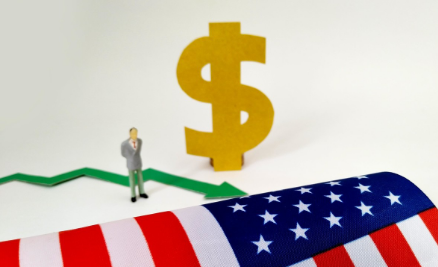 查看详情
查看详情花旗:AI催生"無就業繁榮"新範式,或倒逼美聯儲進一步降息
據追風交易臺消息,花旗在11月6日的報告中表示,AI沖擊下,經濟增長與就業正在脫鉤:AI應用推動生產率提高,但同時抑制企業招聘意願,導致就業數據疲軟;疲軟的就業與溫和的通脹數據將為美聯儲提供繼續降息的空間;而降息又將刺激企業加大AI資本支出,形成正反饋循環。 花旗全球宏觀策略團隊表示,AI正形成"無就業繁榮"的正反饋循環機制。 這種循環打破了傳統經濟周期中就業與增長同步的規律,創造了一種"增長但不創造就業"的新範式。 疲軟的就業與溫和的通脹數據將為美聯儲提供繼續降息的空間,而降息又將刺激企業加大AI資本支出,形成正反饋循環。 花旗強調,在AI驅動的新經濟範式下,貨幣寬松與經濟強勁可以並存,科技投資的回報周期可能比以往更長、更穩定。 分析師強調,如果美國政府能在近期重新開放,美聯儲可能需要考慮三份就業報告的綜合影響。這一判斷與市場主流預期存在差異,暗示降息周期可能比預期更長、力度更大。 市場有風險,投資需謹慎。本文不構成個人投資建議,也未考慮到個別用戶特殊的投資目標、財務狀況或需要。用戶應考慮本文中的任何意見、觀點或結論是否符合其特定狀況。據此投資,責任自負。
2025-11-07 -
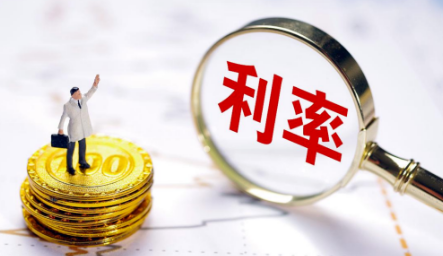 查看详情
查看详情歷史首次,中國“借款利率”追平了美國
中國財政部在香港發行的美元主權債券創下歷史性裏程碑,其三年期債券定價與美國國債收益率持平,標誌著中國的美元借貸成本首次追平美國。 周四,中國財政部發行40億美元主權債券,三年期債券票面利率為3.625%,與同期限美國國債收益率相當,五年期債券定價僅高出美國國債0.02個百分點。此前,盡管中國美元債券在二級市場曾出現負利差交易,但在一級市場發行時始終維持溢價。 該交易吸引了強勁的投資者需求,五年期債券獲得30倍超額認購,超過半數訂單來自央行、主權財富基金和保險公司。 渣打銀行大中華及北亞地區資本市場主管David Yim表示,“市場流動性充裕,地緣政治緊張局勢亦有所緩解。”這一環境為包括中國在內的多個主權發行人提供了以歷史性低溢價進行國際融資的窗口。 主權債券融資成本觸及歷史低位 由中資銀行、美資銀行及其他外資銀行組成的銀團承銷了周四的交易。根據債券條款說明書,募集資金將用於"一般政府用途",交易將於下周四完成結算。 訂單簿顯示,機構投資者對該債券表現出強烈興趣。央行、主權財富基金和保險公司等長期配置型投資者占據了五年期債券超過一半的認購額度,反映出市場對中國主權信用的認可。 中國上一次發行美元主權債券是在2024年,當時在沙特阿拉伯出售了20億美元債券。本次在香港市場發行40億美元,發行規模較上次翻倍,顯示出在融資成本改善背景下,中國增加了美元債券發行力度。 目前,多個國家正抓住美元債券融資成本降至歷史低位的機會發債。今年9月,阿布紮比發行20億美元10年期債券,相對美國國債的利差僅為0.18個百分點。10月,韓國財政部發行10億美元五年期債券,利差為0.17個百分點。 風險提示及免責條款 市場有風險,投資需謹慎。本文不構成個人投資建議,也未考慮到個別用戶特殊的投資目標、財務狀況或需要。用戶應考慮本文中的任何意見、觀點或結論是否符合其特定狀況。據此投資,責任自負。
2025-11-06

